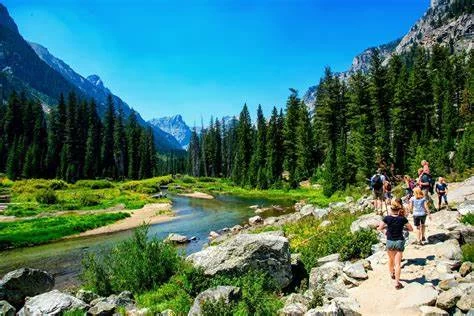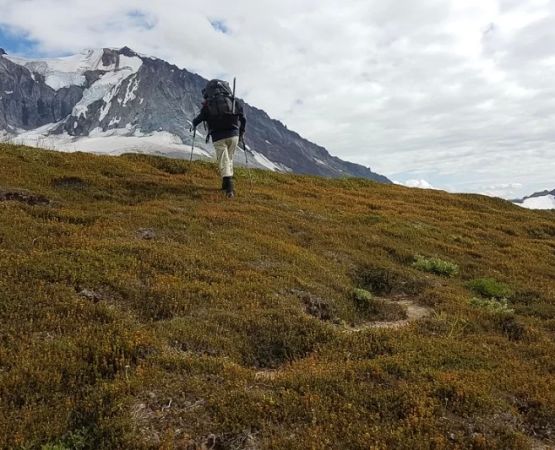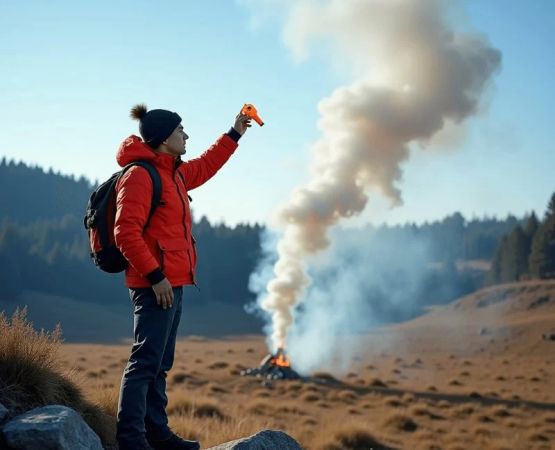- 1-why-nature-walks-and-hikes-are-essential-near-campgrounds
- 2-top-nature-walks-near-popular-campgrounds
- 3-planning-your-hiking-adventure-from-the-campsite
- 4-safety-and-preparation-tips-for-campground-hikes
- 5-benefits-of-combining-camping-with-nature-hikes
- 6-personal-experience-a-memorable-hike-near-pine-cliff-resort
1. Why Nature Walks and Hikes Are Essential Near Campgrounds
When camping, the opportunity to explore nearby nature walks and hikes can elevate your outdoor experience dramatically. Popular campgrounds often serve as gateways to pristine natural environments, where trails wind through forests, along rivers, and up mountains. These accessible paths provide campers with a chance to connect more deeply with nature, engage in physical activity, and enjoy fresh air beyond the campsite.
Nature walks near campgrounds typically vary in difficulty, allowing families and individuals of all skill levels to participate. Whether you want a gentle stroll through wildflower meadows or a challenging hike to a breathtaking summit, trails near campgrounds offer diverse options that complement your camping stay perfectly.
Moreover, taking short hikes or nature walks right from your campground maximizes your time outdoors without the hassle of extra travel. This accessibility encourages spontaneous adventures and helps you discover hidden gems in the area.
2. Top Nature Walks Near Popular Campgrounds
Across the United States, numerous popular campgrounds are renowned not only for their camping facilities but also for exceptional nearby hikes. For example, campgrounds near national parks such as Yosemite, Glacier, and the Great Smoky Mountains provide direct access to some of the country’s most scenic trails.
In Yosemite National Park, campgrounds like Upper Pines and North Pines offer proximity to iconic trails such as the Mist Trail, leading to Vernal and Nevada Falls. These hikes blend natural beauty with rewarding views, making them favorites among campers.
Near Glacier National Park, campgrounds such as Many Glacier and Apgar provide trailheads to diverse hikes ranging from easy lakeside strolls to strenuous mountain treks. The Hidden Lake Overlook trail is a popular choice, accessible directly from campsites.
Closer to the East Coast, Great Smoky Mountains’ campgrounds like Elkmont and Cades Cove are starting points for family-friendly hikes rich in wildlife and historical scenery. The Laurel Falls Trail is one of many that campers enjoy for its ease and picturesque waterfall.
These examples highlight how campers can experience world-class hiking without long drives, allowing for flexible daily outings and deeper immersion in nature.
3. Planning Your Hiking Adventure from the Campsite
Successful hikes near campgrounds start with careful planning. Begin by researching trail lengths, elevation changes, and difficulty levels to match your group’s fitness and interests. Many campgrounds provide maps and guides with detailed information about nearby nature walks and hikes.
Consider the time of day and weather conditions when planning. Early morning hikes often offer cooler temperatures and better chances of spotting wildlife. Packing essentials such as water, snacks, appropriate footwear, and layers for changing weather enhances safety and comfort.
For families camping with children or pets, shorter and well-maintained trails near the campground are ideal. Keeping hikes manageable helps maintain energy for other camping activities like cooking, storytelling, or relaxing by the fire.
For more ambitious hikers, combining multiple trails or aiming for viewpoints and natural landmarks can make your camping trip unforgettable. However, always inform someone at your campsite about your hiking plans and expected return time.
4. Safety and Preparation Tips for Campground Hikes
While hikes near campgrounds are often accessible and well-marked, preparation remains key to a safe experience. Always check trail conditions, especially after adverse weather, as flooding or fallen trees can impact trail safety.
Bringing a basic first aid kit and knowing how to use it is essential. Carrying a map, compass, or GPS device prevents disorientation, especially in more remote areas. Cell phone reception may be unreliable, so offline maps or guidebooks serve as good backups.
Respect wildlife by maintaining a safe distance and storing food securely to avoid attracting animals to your campsite or trail. Also, stay on designated trails to preserve the environment and prevent accidents.
Hydration and sun protection cannot be overlooked. Even short hikes can lead to dehydration or sunburn if precautions aren’t taken, so carry sufficient water and wear sunscreen and hats as necessary.
5. Benefits of Combining Camping with Nature Hikes
Integrating nature walks and hikes into your camping itinerary enriches the outdoor experience physically, mentally, and socially. Physically, hiking improves cardiovascular health, builds muscle strength, and boosts endurance. Mentally, it reduces stress and increases feelings of relaxation and well-being.
Camping itself promotes disconnecting from technology and daily stressors, and adding hikes amplifies this benefit by immersing you in natural beauty and fresh air. Socially, hiking in groups fosters bonding, communication, and shared memories that last long after the trip ends.
For families, hiking introduces children to the wonders of nature and encourages healthy habits early in life. For solo campers, trails offer peaceful moments of reflection and connection with the environment.
Overall, combining camping with nearby nature walks and hikes creates a holistic outdoor experience that satisfies both the adventurous spirit and the need for tranquility.
6. Personal Experience: A Memorable Hike Near Pine Cliff Resort
Last summer, a group of friends stayed at Pine Cliff Resort, renowned for its comfortable campgrounds and immediate access to scenic trails. One morning, they set out on the Ridge Loop Trail, just minutes from their campsite. The hike wound through towering pines, past bubbling streams, and offered stunning views over the valley below.
Along the way, they spotted deer grazing quietly and listened to the songs of local birds. The trail was well-marked and manageable for all skill levels, which made it a perfect choice for their mixed group. After about two hours, they returned energized and ready for a lakeside picnic, sharing stories about the wildlife and beauty they encountered.
This experience demonstrated how nature walks and hikes near campgrounds like Pine Cliff Resort can transform a simple camping trip into a deeply memorable adventure, inspiring a love for the outdoors that brings people back year after year.
If you are planning your next camping trip and want to explore great hiking options nearby, Pine Cliff Resort offers not only excellent accommodations but also expert guidance on the best trails and outdoor activities.







